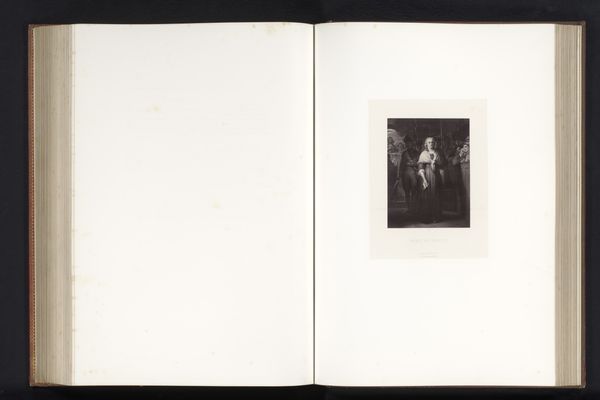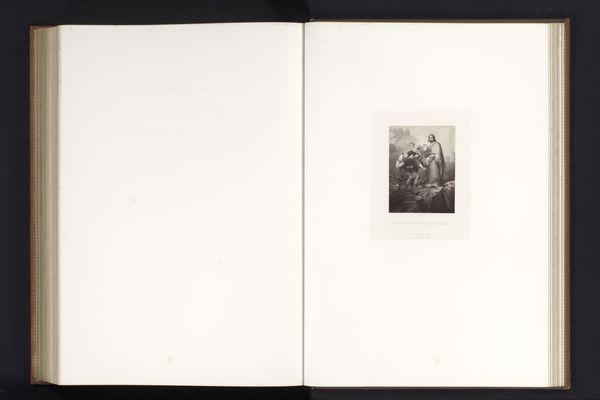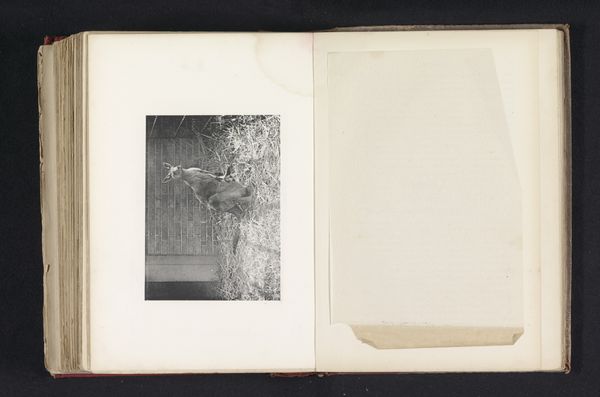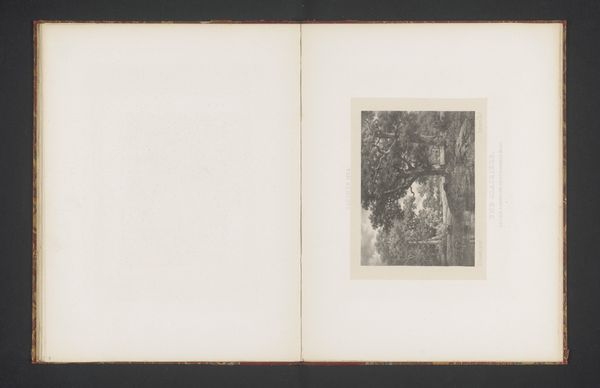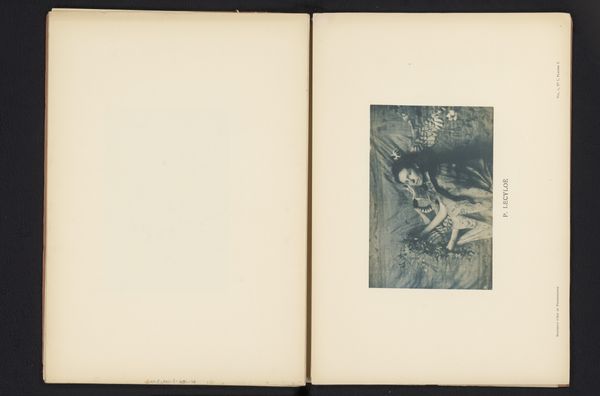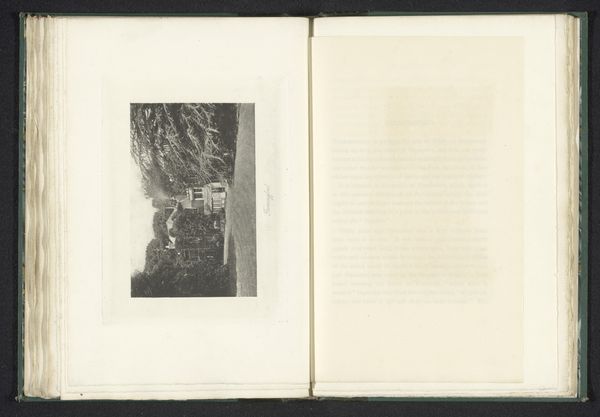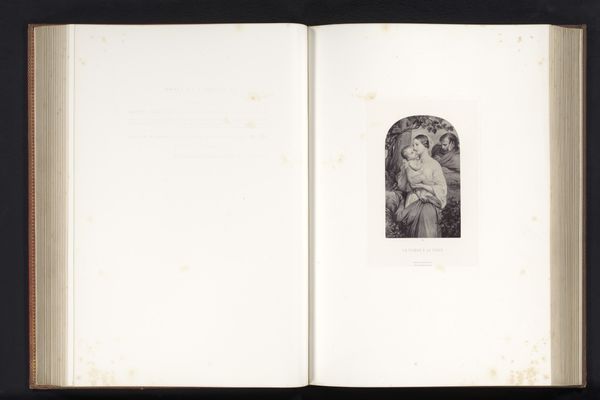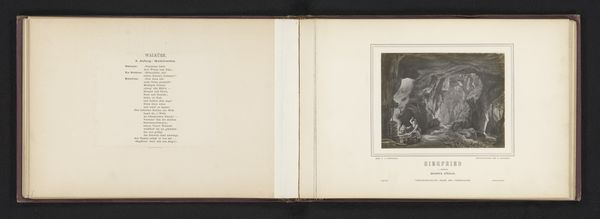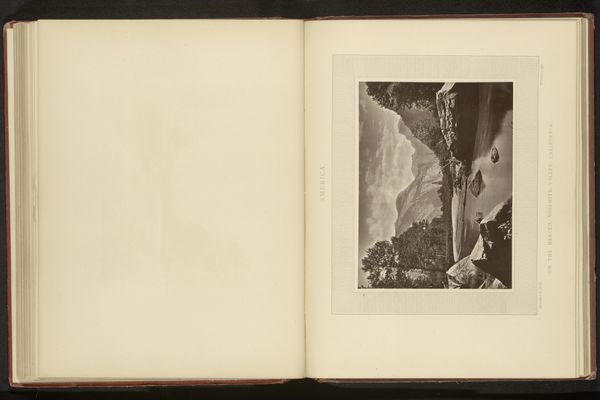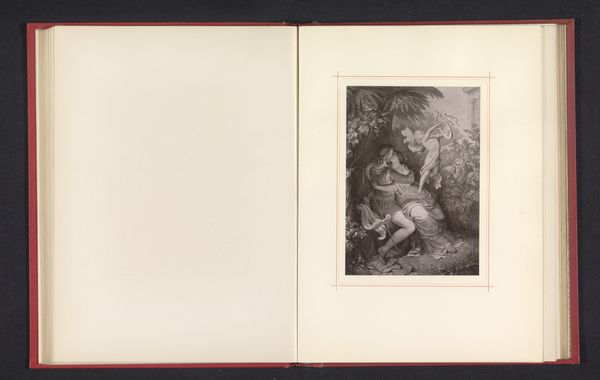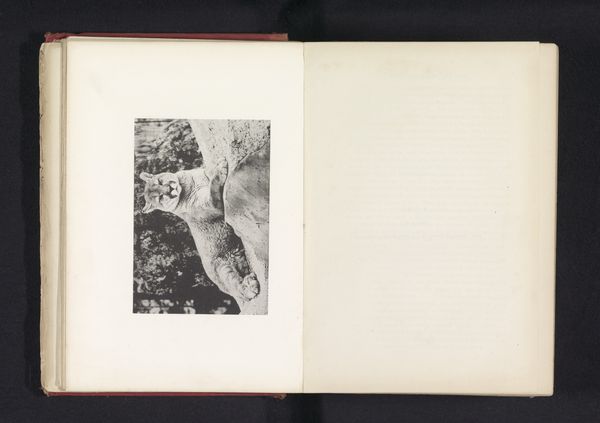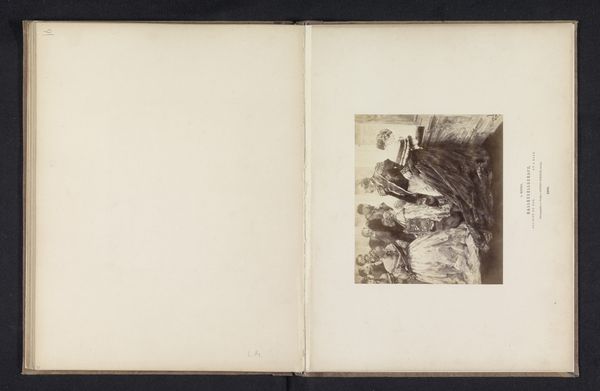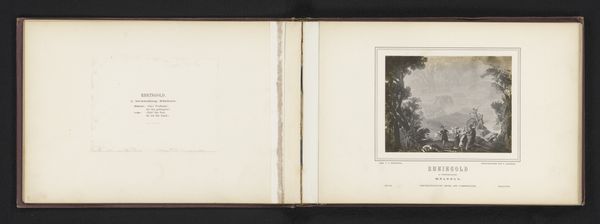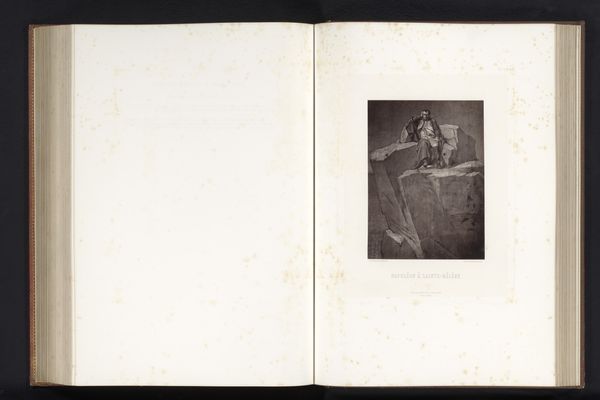
Fotoreproductie van een schilderij van Mozes in een mand op de Nijl door Paul Delaroche before 1858
0:00
0:00
Dimensions: height 215 mm, width 144 mm, height 300 mm, width 214 mm
Copyright: Rijks Museum: Open Domain
Curator: What strikes me immediately is the vulnerability of that infant in the etching. It is so exposed within that watery landscape, an element symbolic of life's uncertainty, which heightens the dramatic tension. Editor: Here we have an early photographic reproduction of a painting by Paul Delaroche entitled 'Moses in the Bulrushes,' likely made before 1858. The scene captures a pivotal moment from the Book of Exodus, highlighting themes of survival, faith, and the intervention of divine providence in human affairs. Curator: The waterlilies or reeds—perhaps stylized bulrushes—emerge, taking on a protective posture behind the young Moses adrift in the small vessel. Considering Romanticism’s focus on nature and feeling, it is tempting to read this element as a gentle acknowledgement that nature recognizes, and pities, what the human patriarchy rejects or exploits. Editor: Precisely. The surrounding flora also acts as a form of concealment, obscuring those who attend to him and suggesting that institutional and personal rejection also entail necessary moments of strategic self-defense. Do you notice how that veiled woman observing overhead blends almost seamlessly with the vertical reeds around her? Her hidden-yet-present watchfulness complicates her narrative in relationship to dominant readings of this event. Curator: Yes! That shrouded figure suggests a persistent vigilance, a guiding and sustaining image across multiple faiths, whether one sees that character as divine intervention or as a metaphor for self-preservation. I cannot decide whether her form offers more promise than precarity; after all, so much danger can hide in a reedy swamp! Editor: The romantic style is interesting to note given Delaroche’s standing among the French Academy and, yet, that figure is cast into shadow and blurred as though unimportant in an institutional accounting. The overall print, the reproduction rather, appears to value certain knowledge and obscure others. Curator: An excellent observation. Such treatment forces viewers to ask how images of displacement can offer empowerment despite centuries of forced migration and resettlement. The scale, of course, reduces the scene into something quaintly reproducible, minimizing the full impact of the situation—an issue familiar to marginalized people and causes worldwide. Editor: This reading forces the visual language and content of religious mythologies into complex arrangements with institutional priorities. In short, such artworks force questions regarding which histories and visual rhetorics are legitimized and what functions of oppression that favoritism fulfills. Thank you for walking with me through that tangled territory, where visibility can veil almost as often as it clarifies!
Comments
No comments
Be the first to comment and join the conversation on the ultimate creative platform.
